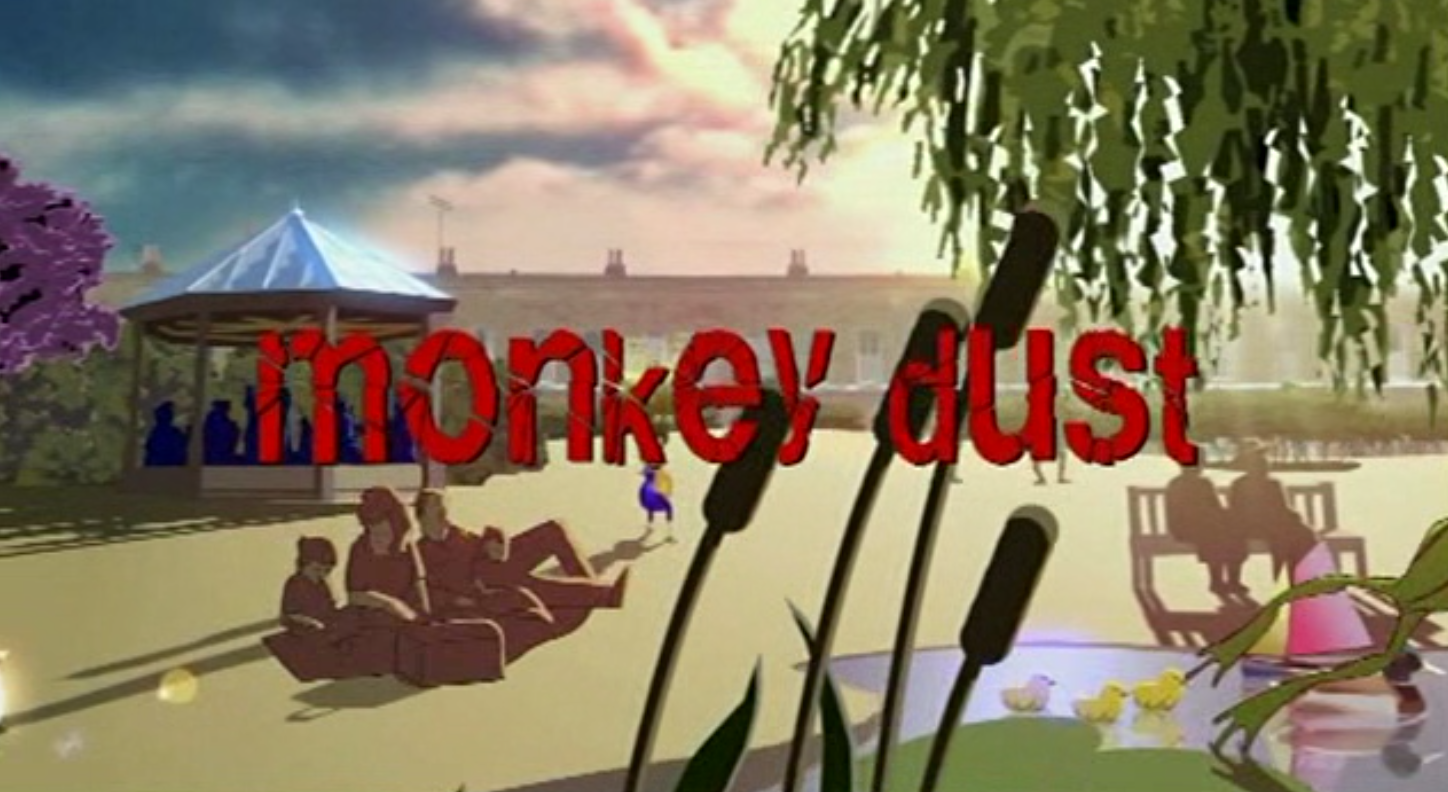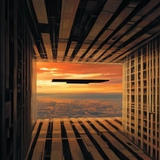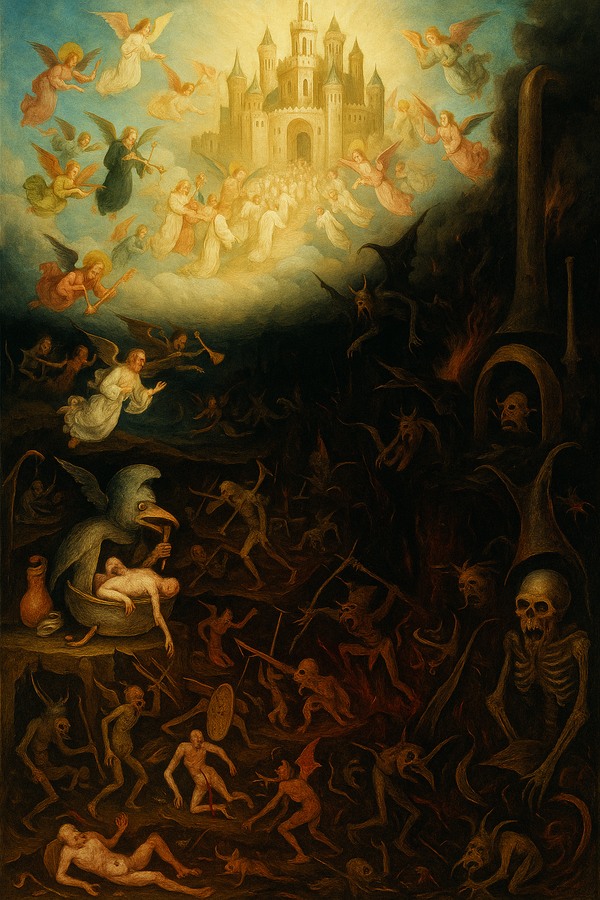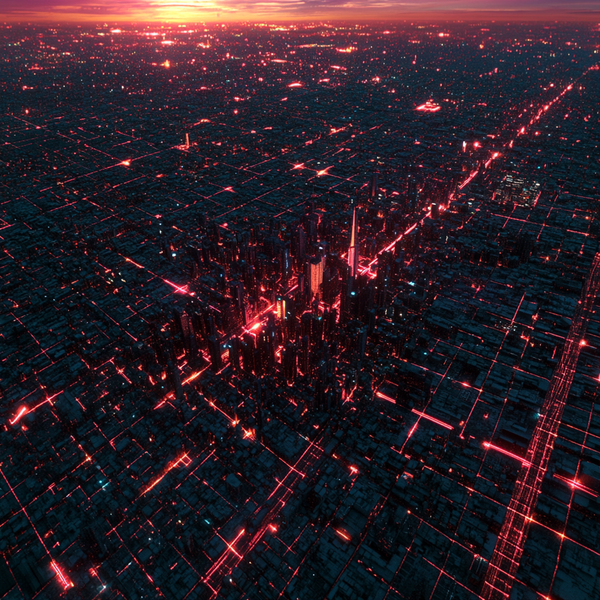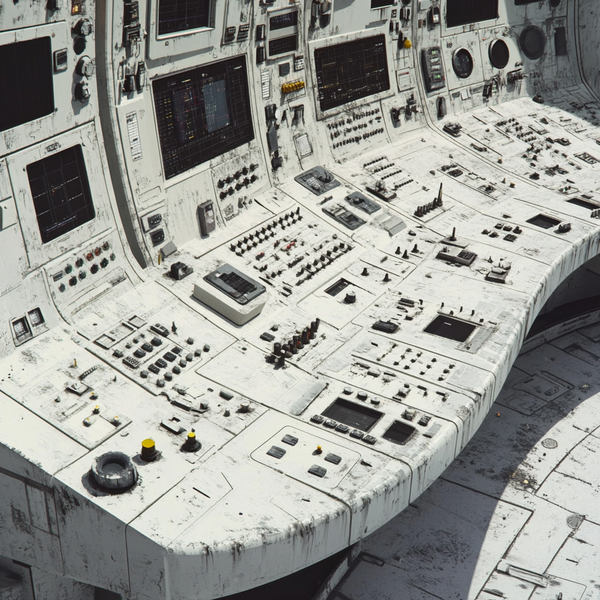Monkey Dust and the Pale Blue Room
A fever dream of early-2000s Britain that still haunts its viewers.
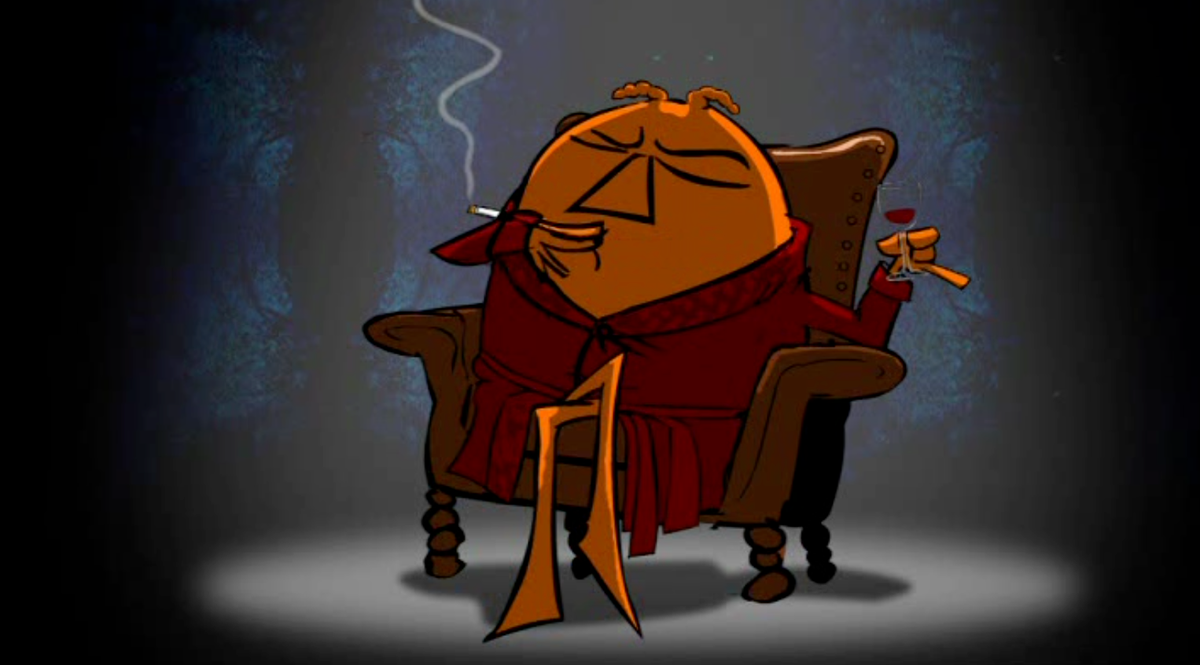
The glow of late-night television once carried a kind of danger. When the rest of the house was asleep, you could stumble on something illicit, anarchic, and half-imagined. It wasn’t designed for you, but it found you anyway. Monkey Dust was that kind of show: a fever dream broadcast through the back-channels of early digital Britain, bleak enough to unsettle, funny enough to stick, and strange enough to feel like you’d imagined it the next morning.
I first discovered Monkey Dust not in Britain, but from a farmhouse in the south of France. I was in my early twenties, and me and my buddy were building a startup in that house while renovating it at the same time. Two halves of the same life: plaster dust and cracked walls by day, glowing screens and precarious ambition by night.
The place was half building site, half home. The walls were thick stone, plastered in something that seemed more like mud than plaster. Days were spent filling cracks, smoothing surfaces, preparing them for paint, long painful days where the walls seemed to swallow more filler than they gave back.
Then, without really stopping, we would pivot back into startup mode: crude prototypes, long emails over dial-up, ambitions bigger than the house itself.
By a twist of misjudged politeness, I had recently built a website for a company selling digiboxes and, instead of money, ended up being paid in digiboxes. Ten of them, maybe twenty, I’ve lost track. Some were Amstrads at the bargain end, others carried the badges of so-called premium makers like Pace or perhaps even Panasonic. There was talk of me selling them on to other Brits in the south of France, but that was never going to happen. I could barely bring myself to admit I’d accepted them in the first place.
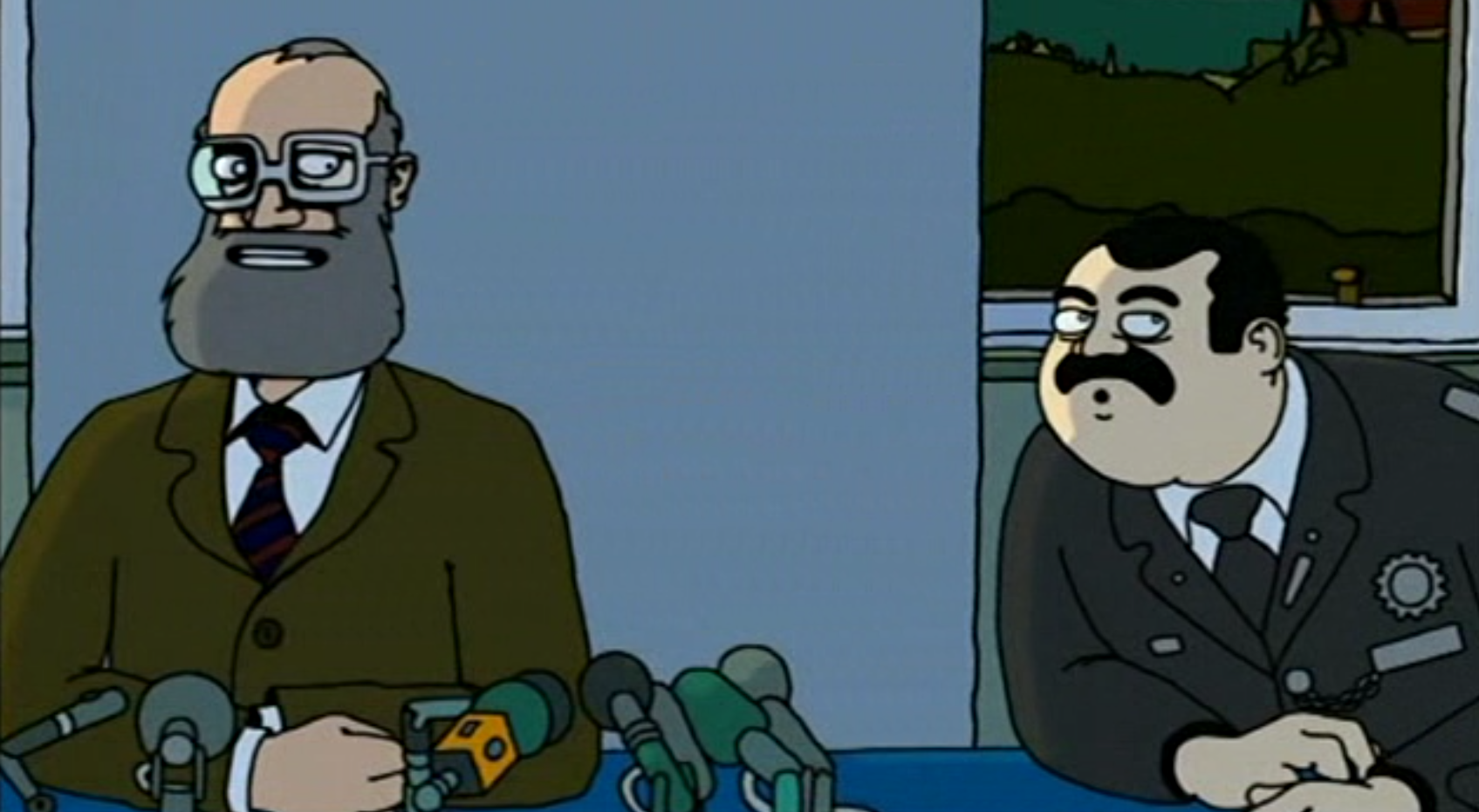
I knew I’d been had, though I tried to look on the bright side: with enough boxes and a multi-output LNB hanging off the dish, everyone in the house could have their own satellite TV. It almost looked like I had planned it.
The dish itself hung outside my window, heavy and awkward, cables spilling into the rooms it fed. Four CRTs flickered to life, each tuned to its own slice of British TV, beamed illegally in from orbit. The farmhouse no longer felt like a renovation project or a half-built startup. It looked like a clandestine broadcast centre, patched together from plastic boxes I hadn’t wanted in the first place.
My room had little else. A portable CRT, a pile of surplus digiboxes, and a few Kylie Minogue calendars, her early-noughties comeback frozen in glossy smiles, presiding over mud-filled walls. The walls themselves were painted pale blue, baby blue really, a colour chosen in haste and never repainted. They are still that colour today.
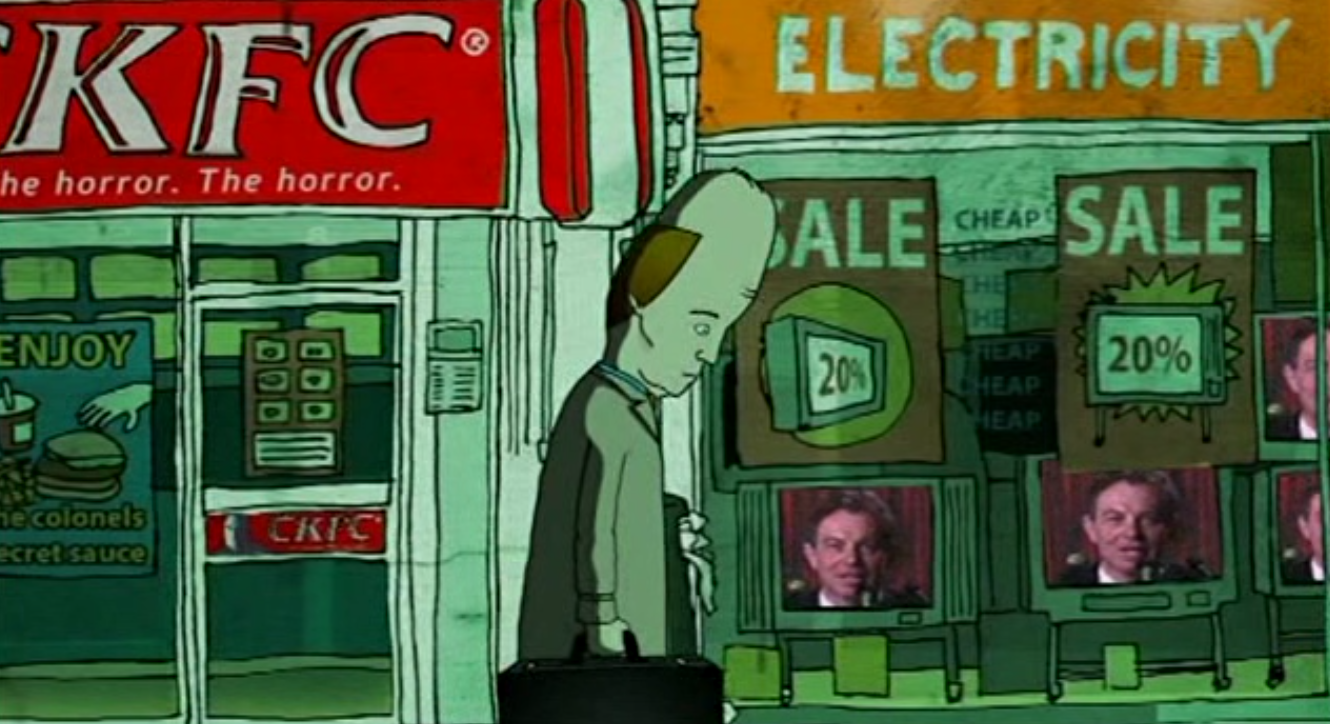
And it was there, after long days choking on plaster dust and long evenings of coding offline (imagine!), that I stumbled across Monkey Dust: a show so bleak and surreal it felt like a hallucination, piped illicitly from Britain into the French night.
On paper, Monkey Dust was a sketch show: animated shorts stitched together in a half-hour slot. In practice, it was closer to a cultural séance. Recurring figures weren’t really characters so much as avatars of decline: Omar and his West Bromwich terror cell carefully planning jihad around Stars in Their Eyes and Angel Delight; Ivan Dobsky, the “Meat-Safe Murderer,” forever insisting he hadn’t done it; the Paedofinder General, spotting paedophiles in Fiddler on the Roof or a boy playing with his dog; the Homeless Poet mumbling bleak laments into the void; the coke-addled media executive raving at warp speed; and Jerry Berman, the sleazy PR man, forever rebranding disgrace into “opportunity.”
Most sketch comedy works by building tension and then letting you exhale with a punchline. Monkey Dust refused to give you that oxygen. Jokes would spiral downward without catharsis. Punchlines were often non-punchlines: suicide, degradation, corruption.
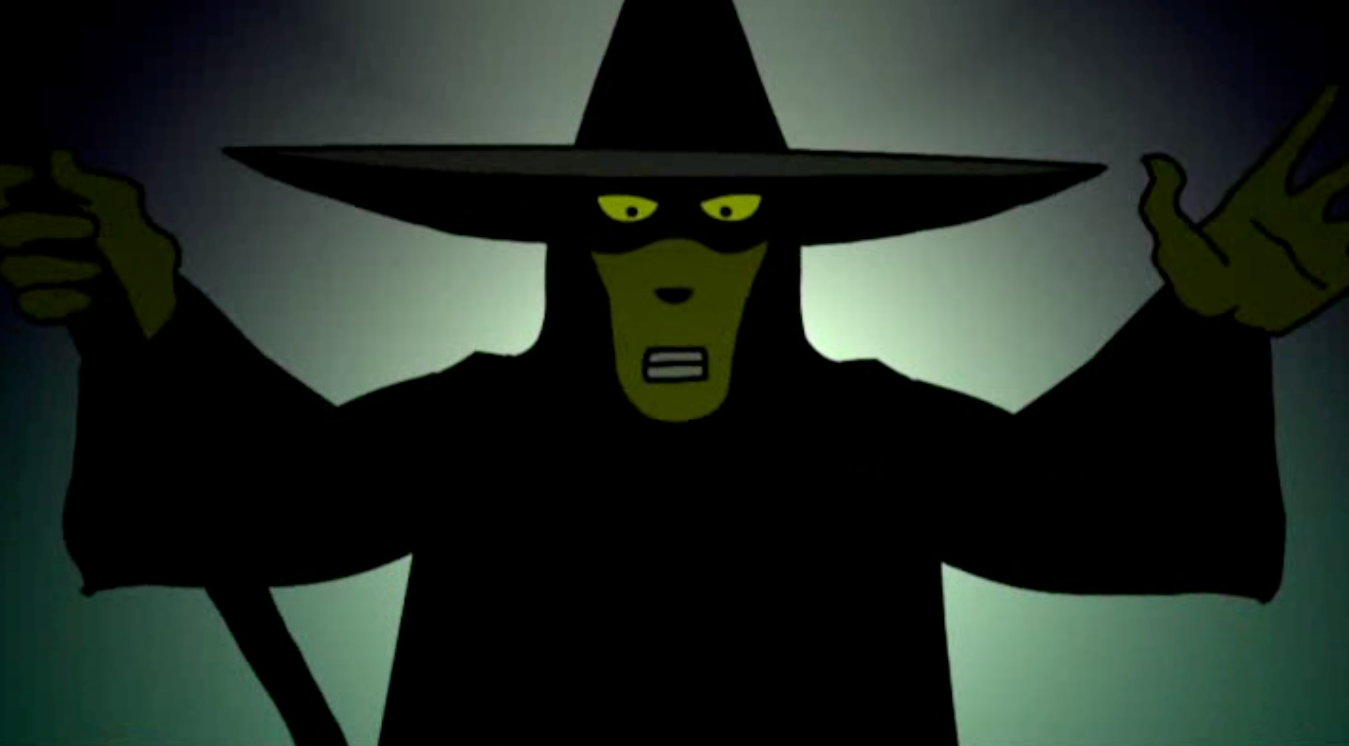
In one recurring sketch, a young office intern would quietly open a window and step out, plummeting to her death while colleagues barely noticed. There was no setup, no payoff, just the bleak repetition of collapse, until it became funny again in the way gallows humour sometimes is.
Even family life was fair game. One strand followed a divorced father desperately trying to please his son. Each time the boy rejected him with cutting spite, until the father killed himself. Only then would the son admit he had wanted what was offered all along, and had just been told to say otherwise.
Most of these loops never broke, which made them feel like nightmares replaying on a tape. Ivan Dobsky was released at the start of every sketch, only to immediately commit another crime and find himself back where he began, still insisting “I didn’t do it, I only said I did.” The father-son strand would sometimes sharpen into a cruel full stop. Endings, when they came, were never a relief — they were bleaker than the loops themselves.

When you watch it back now, the variety of animation styles is impossible to miss. Some sequences look scrawled and jittery, others more painterly, others like crude cut-outs. The differences are stark, yet you realise how little it matters to the message. Lo-fi often suited the material.
I’ve always assumed this patchwork look came from splitting the work between different studios, maybe even to get the show made more quickly. I don’t know that for a fact. It’s just what I inferred watching it — the seams felt visible, but they were part of the effect. Whether it was deliberate or pragmatic, it worked. That fractured aesthetic became part of the DNA: a reminder that the grotesque doesn’t need gloss.
The music gave it another dimension. Monkey Dust didn’t settle for stock loops or cartoon stings. It curated a soundtrack as deliberate as the writing: Goldfrapp, Eels, Aphex Twin, Saint Etienne.
Pulp’s Sunrise was used in one of the longer montages, the instrumental build looping as the animation descended into chaos. No Jarvis Cocker vocal, no lyrical guide, just guitars and strings straining upwards while the visuals sank further down. For me it carried added force because Pulp have always been my favourite band.

Sometimes the choices were sly rather than grand. In one sketch, a North London dinner party serves up the head of a tramp as a delicacy, all while David Gray plays softly in the background. The bland crooning undercut the horror and made it bite harder.
Monkey Dust understood that music could be part of the joke, part of the wound, part of the aftertaste.
The cruelty was democratic. Politicians and media barons got it, but so did hoodie-wearing lads, pseudo-intellectuals, Geoff the first-time cottager, the Mail-Order Bride Man, Alex the serial dater, even the Nazi Grandfather. And then there were the lazy gags, like the “women reading a map” sketch — crass, misogynistic, but of a piece with the show’s refusal to draw safe lines.
Some jokes landed so hard they left aftershocks. I still can’t give my own kids a Mr Hoppy space hopper. If you watched Monkey Dust you’ll know why. Once that innocent orange toy had been dragged into the show’s orbit of grotesques, it stopped being innocent forever.
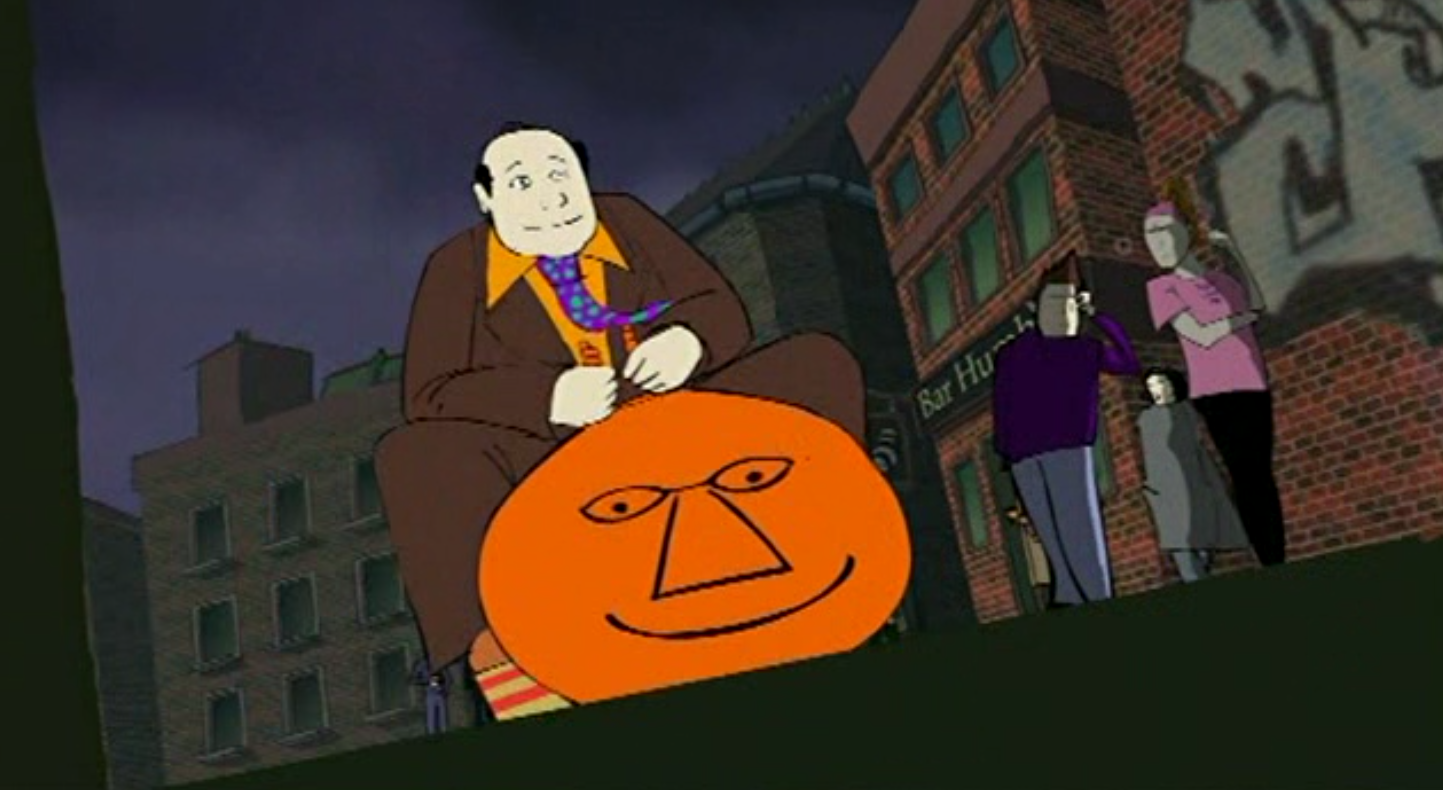
One of the sharpest sketches showed Omar’s mum fussing over his jihadist plans as though they were nothing more unusual than football practice. She knew exactly what he was plotting but folded it into routine: Findus Crispy Pancakes for tea, Angel Delight for pudding, and a reminder not to schedule martyrdom during the Stars in Their Eyes final.
Omar’s cell weren’t just distracted by TV talent shows or cheap puddings. Sometimes it was West Bromwich Albion fixtures, and in those days Russell Hoult was the lauded shot-stopper. Hoult died only weeks ago, aged fifty one. Seeing his name in the news pulled me straight back to that sketch. Absurdity and tragedy still bleeding into one another.
That mix of jihad and Angel Delight has echoes in Chris Morris’s Four Lions. Monkey Dust aired between 2003 and 2005, before the London bombings of July 2005. Four Lions appeared in 2010, written in the shadow of 7/7. Morris’s film had to reckon with real horror, while Monkey Dust had satirised the same themes in the years just before, treating them as grotesque absurdity rather than aftermath. Seen together, the two works feel like parts of the same conversation: one anticipating, the other responding.
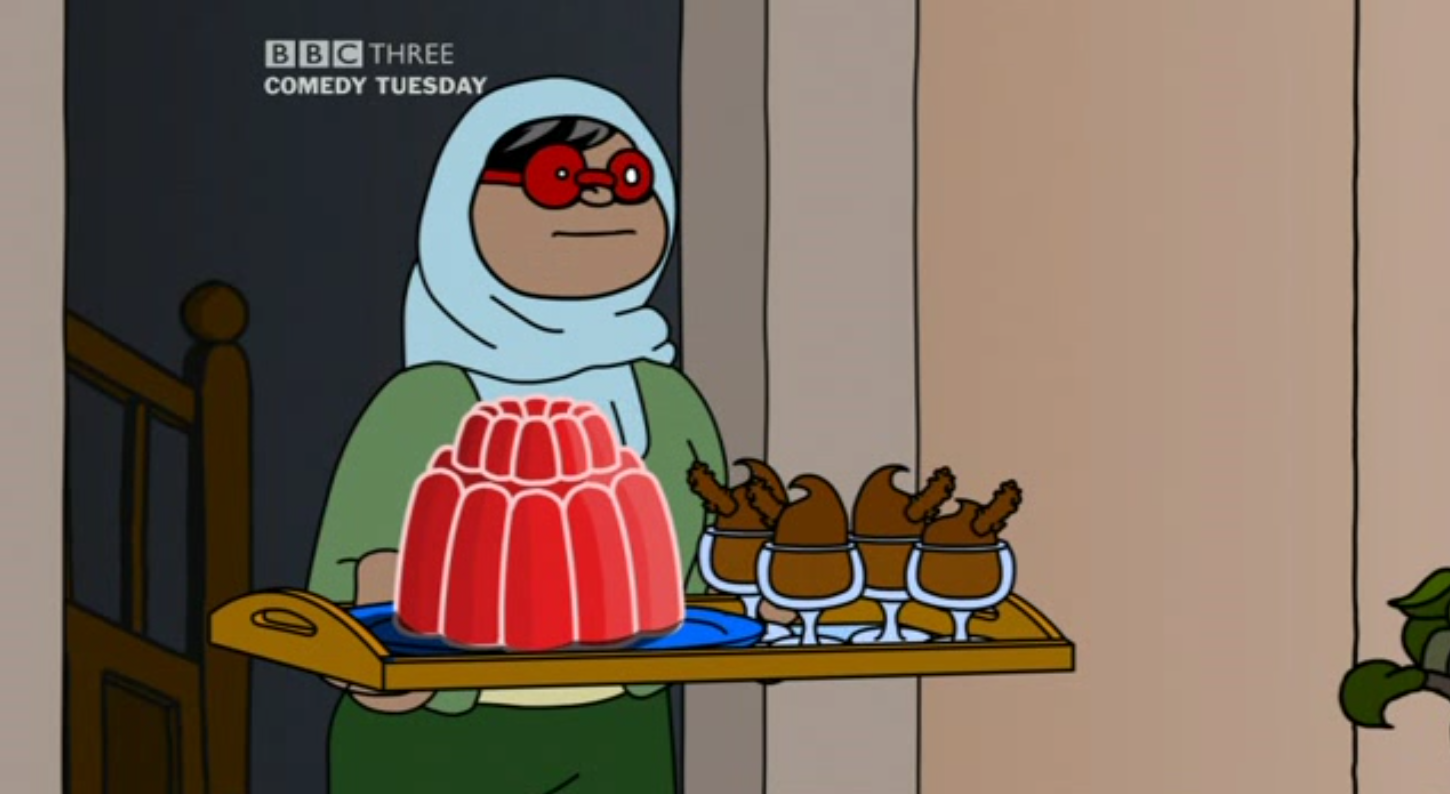
Other sketches read now like previews of the present. The Newsletter Man thrusting leaflets at uninterested strangers feels eerily like today’s corporate email culture. Ivan Dobsky’s endless denials look like modern politics. Jerry Berman’s staged redemption arcs are influencer apology tours. The coke-addled executive has become the content algorithm. The Paedofinder General is every comment-thread zealot, convinced he is saving civilisation one denunciation at a time.
For those who never caught it, the closest comparisons only get you part of the way there. It had the queasy, relentless bleakness of Chris Morris’s Jam, the bile and prescience of Charlie Brooker’s early columns, and a whiff of League of Gentlemen’s grotesques. But where those shows felt scripted, even theatrical, Monkey Dust was a scattershot hallucination: an animated Brass Eye stripped of studio polish, closer to a bad dream than a comedy. The nearest modern equivalents such as South Park or Rick and Morty still look glossy by comparison. Britain only brushed against this form once, and then it disappeared.
Harry Thompson, who co-created the series, died of lung cancer in November 2005, aged just forty five. His death sealed Monkey Dust in amber. Shaun Pye, the other co-creator, went on to write and produce other sharp work, but Monkey Dust remains his most uncompromising creation. Between them, Thompson and Pye smuggled onto the BBC something that felt more like a pirate transmission than a comedy show.
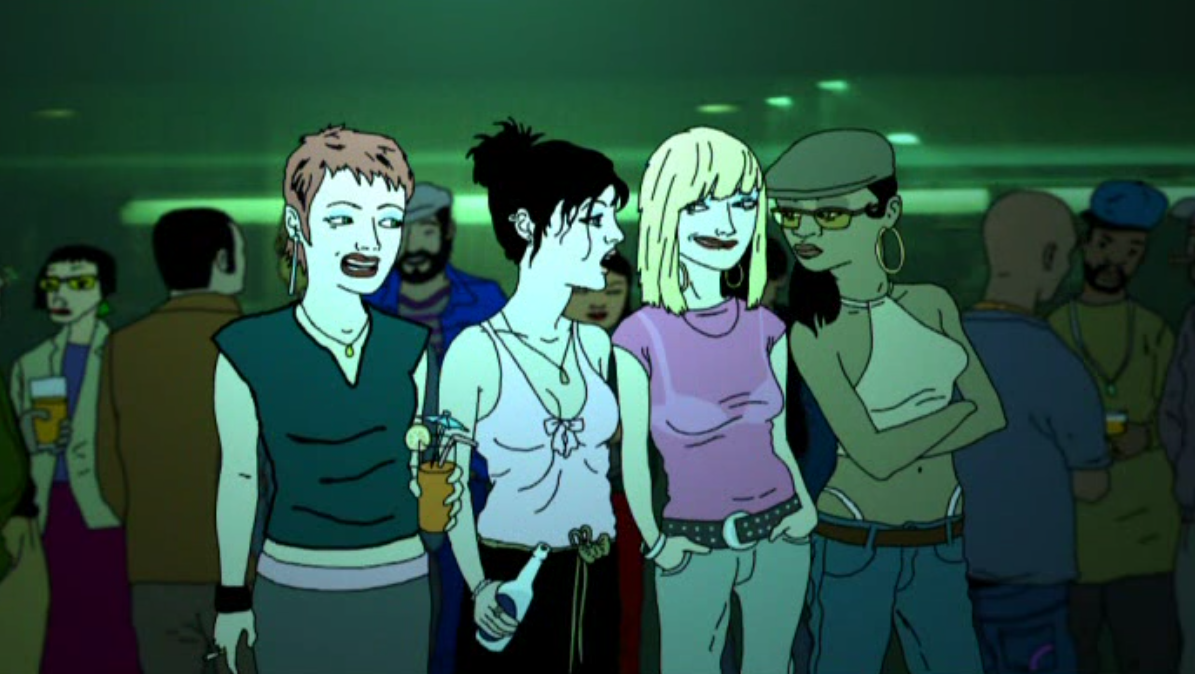
Three series aired, then nothing. No reruns, no streaming deals, no revival. In an era when everything is endlessly recycled, its absence feels shocking. Music rights probably buried it, but so did fear. Television no longer wants the risk of something so poisonous. Monkey Dust survives now only in fragments, uploads, poor-quality rips.
And yet its sketches still linger. Ask anyone who watched it two decades ago and they can probably still quote Ivan Dobsky, picture the tramp-head dinner party, hear the intern’s window opening. The images and catchphrases became cultural shrapnel. Even twenty years later, most Brits who saw it would still recognise them instantly.
I still watch it back. Even after dozens of viewings, sketches I’d forgotten resurface like half-buried corpses. Each rediscovery hits as hard as the first time.
I could go through them all, but part of the point is stumbling on them yourself. Monkey Dust is not easy to find now, but the fragments are out there if you look. Just be warned: the show will get under your skin. And if ever there was a legitimate case for a trigger warning, this might be it.
